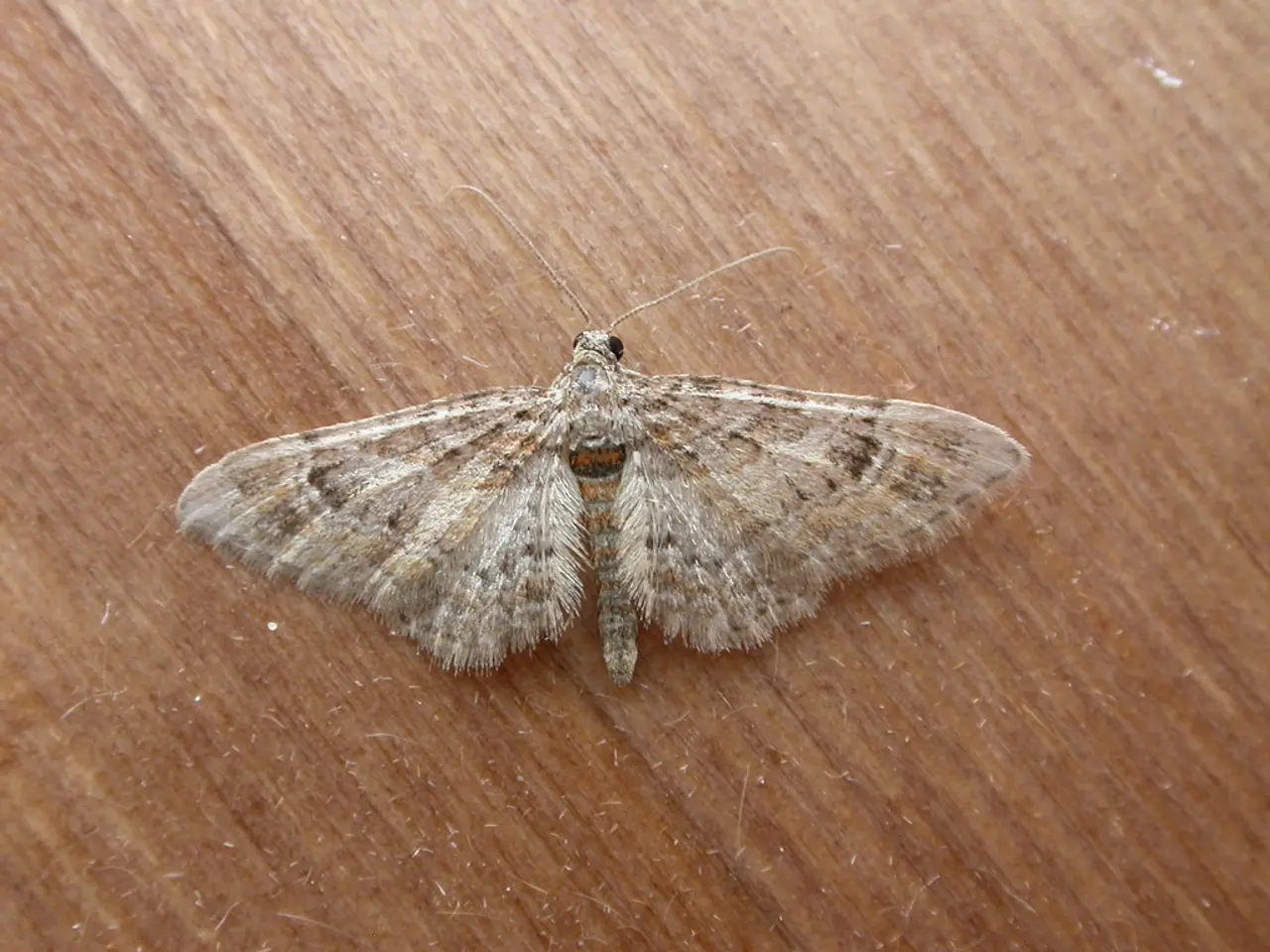Tree Owners Confronted with Douglas Fir Tussock Moth: Strategies for Battling this Evergreen Pest
In the Pacific Northwest, a common threat to Douglas Fir trees is the Douglas Fir Tussock Moth (DFTM). Recognising, preventing, and treating DFTM infestations is crucial to safeguard the health of these trees.
Identifying DFTM Infestations
The DFTM caterpillar is easily identifiable with its hairy body, appearing grayish and adorned with characteristic tufts of hair. Signs of infestation include defoliation (loss of needles), frass (caterpillar droppings) around the tree base, and visible egg masses on bark during dormant seasons. To detect hiding larvae during the day, burlap or fabric bands can be wrapped around the trunk.
Preventing DFTM Infestations
Prevention is key in managing DFTM populations. In early spring, install sticky or burlap bands on trunks to trap or detect caterpillars. Remove and destroy egg masses during dormant seasons by scraping from bark or soaking in soapy water. Encourage natural predators such as birds or parasitic wasps, and maintain tree health with proper watering and avoid monocultures to reduce vulnerability. Regular inspections in spring, when caterpillars are active, are also essential.
Natural Controls
Promote biological control agents like parasitic flies, birds, and beneficial insects to help manage DFTM populations naturally. Apply Bacillus thuringiensis kurstaki (Btk), a bacterial insecticide effective on young caterpillars, when sprayed early in spring. Neem oil or insecticidal soaps can be used for small caterpillar populations or low infestation levels; these disrupt feeding but are safer for beneficial organisms. Burlap skirts can be used to collect and manually remove larvae, but handle with care as hairs may cause irritation.
Chemical Treatments
Over-the-counter pesticides containing Btk or Spinosad can be effective when sprayed on foliage during active feeding periods. For larger infestations or groups of trees, professional application of licensed pesticides may be necessary. Aerial spraying is possible but costly and requires permits. Fertilization is not recommended; focus on supplemental watering, especially during drought, to improve tree resilience.
In summary, controlling DFTM caterpillars demands an integrated management approach consisting of early detection (egg mass and larvae monitoring), cultural practices (tree health, debris removal), natural biological controls, and selective use of bacterial or chemical insecticides timed to the caterpillars' life cycle. Physical methods like fabric bands and egg mass removal complement natural and chemical controls for effective mitigation.
[1][3][5]
Written by Mary Ellen Ellis, an expert in flowers, native plants, and herbs.
It is essential to act promptly when detecting DFTM infestations, as these caterpillars can defoliate affected areas of the tree, potentially killing the top of the tree if not controlled. Heavy damage can kill the whole tree, especially if the infestation is left unmanaged for more than one season. Additionally, DFTM infestations can make Douglas firs more susceptible to bark beetles, fungal diseases, and cankers.
The DFTM caterpillar has a gray-brown body and a shiny black head, with tussocks (or tufts) of black hair - two at the front and one at the back. The male DFTM is roughly one inch (2.5 cm) wide and has reddish-brown forewings and grayish-brown rear wings, while the female is wingless and has a thick body. The male DFTM flies, and birds feed heavily on young caterpillars before they develop their irritating spines.
Chemical and microbial pesticides labeled for tussock moths can help reduce numbers in case of a large infestation. The DFTM cocoons attach to twigs and are grayish-brown and appear hairy. The female DFTM deposits round, white eggs in a frothy substance.
A basic DFTM prevention strategy is to promote other native species, as growing native plants supports natural predators of DFTM caterpillars, thereby preventing or minimizing outbreaks.
- To safeguard the health of Douglas Fir trees, it's essential to follow a preventive approach in managing Douglas Fir Tussock Moth (DFTM) populations, such as encouraging natural predators, maintaining tree health, and conducting regular inspections during active feeding seasons.
- In the home-and-garden setting, focusing on lifestyle changes like promoting native plants that support natural DFTM predators can be an effective way to prevent or minimize infestations, protecting trees from potential harm.




